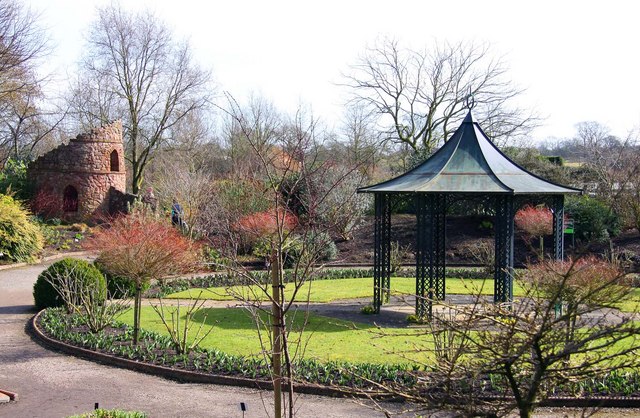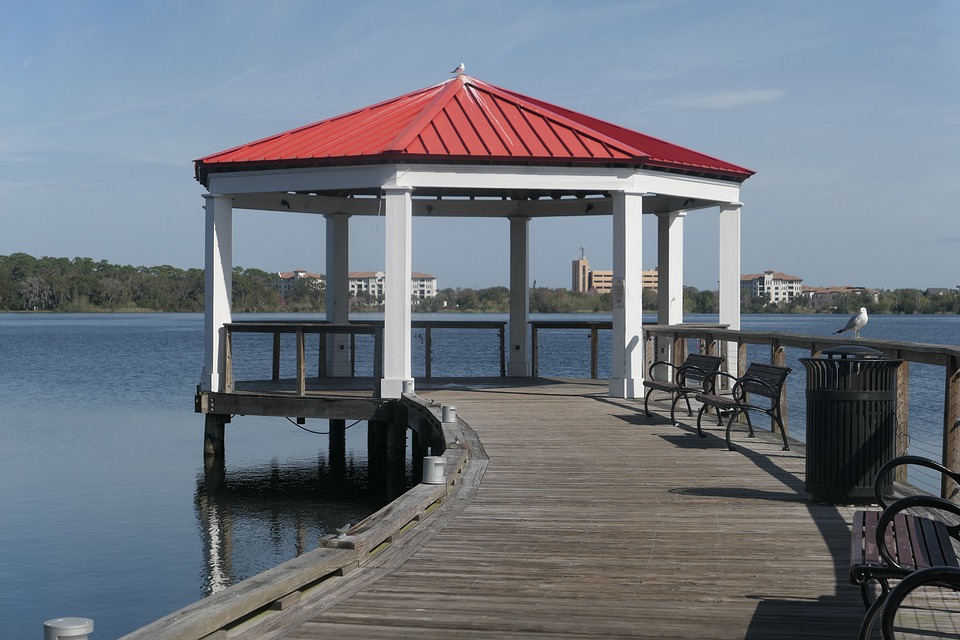Gazebo
Contents |
[edit] Introduction
A gazebo is a freestanding, roofed structure in an outdoor area such as a private garden or public park.
It is believed that the first gazebos were built by the Egyptians approximately 5,000 years ago. Built near water, these early private structures were used to support the growth of vines and decorative and edible plants. Other ancient civilisations (such as the Persians, Greeks and Romans) used gazebos to conduct business or relax in public gardens.
In the Middle Ages, gazebos became popular in Europe. In the 17th and 18th centuries, they were incorporated into gardens as exotic viewing structures - which allegedly serves as the background for their name (which is said to be an 18th-century joke word combining “gaze” with the Latin suffix ebo, meaning “I shall.”)
The word gazebo was used in a book by John and William Halfpenny; 'Rural Architecture in the Chinese Taste,' published in the mid-18th century.
[edit] Characteristics of gazebos
Gazebos are similar to pavilions, pergolas, summer houses and bandstands in terms of very basic functionality. All these structures are used to create shade in a sunny part of a garden or shelter from rain. They also serve as public gathering places. However there are several differentiations.
[edit] Gazebos vs pavilions
Gazebos are usually permanent structures that are typically octagonal or round. They have a built in floor and may be screened, curtained or closed in so they can protect occupants from the elements during outdoor social gatherings. Some are attached to a garden wall but most are freestanding.
Pavilions are usually temporary structures that offer shelter for a patio or other outdoor seating area. They are supported by posts or poles and may be attached to a base (such as a deck or patio) that serves as an additional support structure (since most pavilions do not have a built in floor). Pavilions are usually open on all sides and are traditionally square or rectangular.
[edit] Gazebos vs summerhouses
These two structures are virtually identical, although a summerhouse is often a smaller structure built on private property. Used by Thomas Jefferson in his writings, the term summerhouse (also referred to as summer house) may be a regional American preference.
[edit] Gazebos vs pergolas
Gazebos tend to be stand-alone structures while pergolas are used to define a specific portion of a garden. Pergolas are more closely related to pavilions, although pergolas typically have exposed overhead structures while pavilions do not.
[edit] Gazebos vs bandstands
Gazebos are often octagonal, but bandstands are almost always circular (or semicircular in some instances). Both structures can be ornamental, and gazebos are sometimes used as bandstands. However, bandstands are generally larger structures in public settings, constructed in a park, garden, estate or on a pier. They are often built on a raised platform and feature special acoustics in the ceiling to accommodate the requirements of musicians.
[edit] Related articles on Designing Buildings Wiki
- Bandstand.
- Bandstands: pavilions for music, entertainment, and leisure.
- Belvedere.
- Clairvoyee.
- Exedra.
- Eyecatcher.
- Folly.
- Garden.
- Hard landscape.
- Impact of pavilion design on sustainable outcomes.
- Kiosk.
- Landscape design.
- Monopteros.
- Park.
- Pavilion.
- Pergola.
- Summerhouse.
- Temporary demountable structures.
- Types of garden fountain.
Featured articles and news
RTPI leader to become new CIOB Chief Executive Officer
Dr Victoria Hills MRTPI, FICE to take over after Caroline Gumble’s departure.
Social and affordable housing, a long term plan for delivery
The “Delivering a Decade of Renewal for Social and Affordable Housing” strategy sets out future path.
A change to adoptive architecture
Effects of global weather warming on architectural detailing, material choice and human interaction.
The proposed publicly owned and backed subsidiary of Homes England, to facilitate new homes.
How big is the problem and what can we do to mitigate the effects?
Overheating guidance and tools for building designers
A number of cool guides to help with the heat.
The UK's Modern Industrial Strategy: A 10 year plan
Previous consultation criticism, current key elements and general support with some persisting reservations.
Building Safety Regulator reforms
New roles, new staff and a new fast track service pave the way for a single construction regulator.
Architectural Technologist CPDs and Communications
CIAT CPD… and how you can do it!
Cooling centres and cool spaces
Managing extreme heat in cities by directing the public to places for heat stress relief and water sources.
Winter gardens: A brief history and warm variations
Extending the season with glass in different forms and terms.
Restoring Great Yarmouth's Winter Gardens
Transforming one of the least sustainable constructions imaginable.
Construction Skills Mission Board launch sector drive
Newly formed government and industry collaboration set strategy for recruiting an additional 100,000 construction workers a year.
New Architects Code comes into effect in September 2025
ARB Architects Code of Conduct and Practice available with ongoing consultation regarding guidance.
Welsh Skills Body (Medr) launches ambitious plan
The new skills body brings together funding and regulation of tertiary education and research for the devolved nation.
Paul Gandy FCIOB announced as next CIOB President
Former Tilbury Douglas CEO takes helm.
UK Infrastructure: A 10 Year Strategy. In brief with reactions
With the National Infrastructure and Service Transformation Authority (NISTA).
























